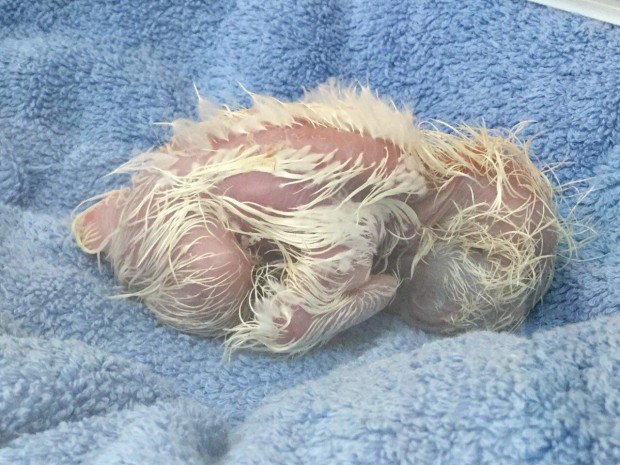
The still unnamed eaglet was hatched last Thursday at the Philippine Eagle Center in Malagos District in Davao City. It is the 27th eaglet bred and hatched in captivity. Photo by Philippine Eagle Foundation (PEF)
DAVAO CITY –- The Philippine Eagle Center here has a new eaglet, the 27th Pithecopaga jefferyi born in captivity.
Still unnamed, the eaglet broke out of its shell on Thursday (Feb. 4), or after 57 days of incubation.
The Philippine Eagle Foundation’s breeding program started in 1987. The center is responsible for producing its first eagle, Pag-asa, conceived, hatched and bred in captivity on January 15, 1992.
“The 27th eaglet is the second offspring of natural pair MVP Eagle (Male) and Go Phoenix (Female) since they became partners in 2013,” PEF curator Anna Mae Sumaya said in a statement.
Sumaya said eagles MVP Eagle and Go Phoenix have been remarkably successful in producing two fertile eggs this breeding season.
The new eaglet is the sibling of “Sinag,” which was recently adopted by Philippine Airlines.
“This milestone will hopefully usher in a new generation of eagles that will help repopulate our forests and, in turn, serve as ambassadors for saving many other lifeforms who share the rainforest with them. We invite everyone to get involved to help our country save its national heritage and treasures,” said PEF Executive Director Dennis Salvador.
Salvador said the center will “need more space to house incoming eagles as it is now running at full capacity.”
PEF continues to boost the critically-endangered species’ fight against extinction, in the hopes of supplementing the Philippine Eagle’s population in the wild.
The Philippine eagle is considered an endangered species because of its rapidly declining population.
The PEF is responsible for producing eagle icon Pag-asa in 1992 and 26 others now at the center.
The PEF’s breeding program is intended to supplement eagle population in the wild by replacing those lost to hunting and by reintroducing captive-bred birds to vacant habitats and habitats occupied by unpaired wild eagles.
The Philippine eagle is considered an endangered species because of its rapidly declining population.
At least 400 pairs remain in the wild according to estimates from both the government and private conservation groups.
The foundation depends heavily on donations for its project that includes breeding, education and campaign to save the endangered species.
At present, the species is classified “critically endangered” by the International Union for the Conservation of Nature (IUCN).